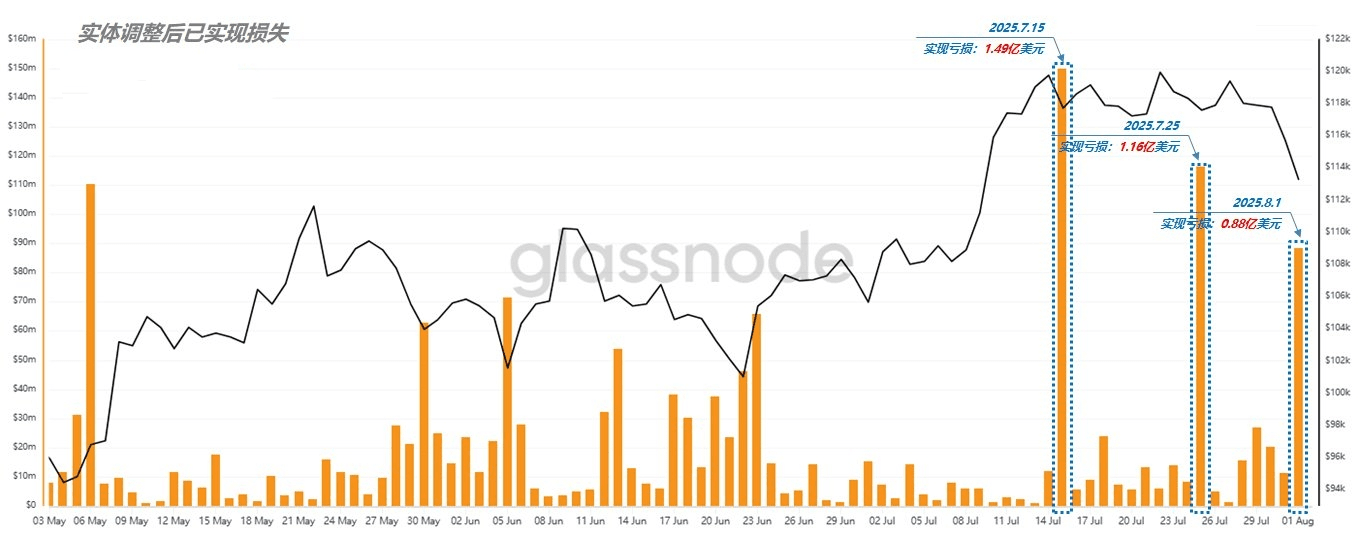“Rising attention to profit realization, falling observation of loss selling,” this data analysis method provides us with an important perspective for understanding the sentiment in the cryptocurrency market. In the past month, Bitcoin has experienced three significant loss selling events, and by organizing this data, we can glimpse potential changes in the market.
On July 15, BTC experienced a technical correction after reaching a new high, with some investors choosing to take profits, resulting in $149 million in realized losses for the day. This is a normal adjustment after the market peaks, reflecting the players' mentality of securing profits.
On July 25, the transfer by the 'ancient giant whale' raised market concerns about selling pressure, leading some players to follow suit and sell, resulting in a realized loss of $116 million for the day. This incident shows that the market remains sensitive to the movements of giant whales, but the level of panic is relatively limited.
On August 1, influenced by multiple factors such as Trump's tariff policy, the Federal Reserve's decision, and non-farm payroll data, BTC's price faced short-term pressure, and the realized loss for the day dropped to $88 million. Despite the accumulation of negative factors, the scale of losses has narrowed compared to the previous two instances.

(Figure 1)
By comparing the data from these three events, a key phenomenon can be observed: despite lower prices, there have not been higher realized losses. This means that in the face of small-scale negative events, Bitcoin players are increasingly inclined to hold their positions rather than sell at a loss; the market's reaction to short-term events is weakening, and the correlation between risk-averse sentiment and events is decreasing.
It can be seen that the possibility of Bitcoin experiencing an unexpected sharp decline is relatively low. Only when larger negative events trigger panic sentiment could the current market situation be broken; otherwise, the players' reluctance to sell may support the market in maintaining relative stability.
